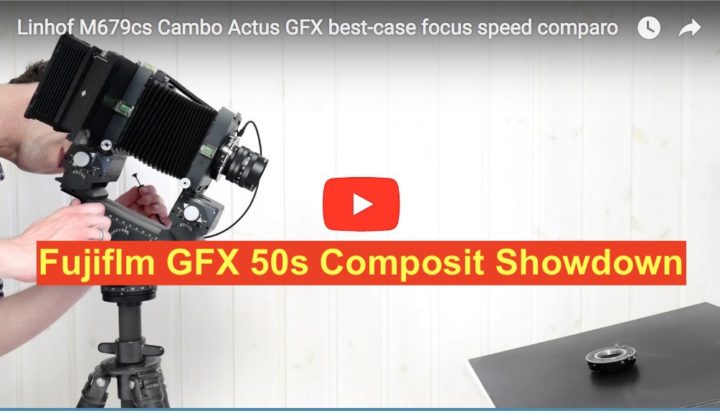Fujiflm GFX 50s Composit Showdown: Nikkor 105/5,6 VS Sinaron 105/4; LR VS X-Transformer; Helicon Focus VS Affinity Photo

GUEST POST FEATURE
Write Your Articles Directly on FujiRumors!
guest post by Nathan Wright
Note: a mate of mine asked what Helicon Focus did, which RAW processor I used, and why I wasn’t clear about anything in the above video. I’m new to YouTube. Lots to learn. Many thanks for the constructive criticism. The RAW processors I used were Lightroom and XTransformer. Helicon Focus and Affinity Photo handledthe compositing.
Before we get started, Patrick has been kind enough to allow me to publish the following articles on Fuji Rumors.
- Novoflex BALPRO T/S adapter review: Part 1
- Novoflex BALPRO T/S adapter review: Part 2
- Novoflex BALPRO T/S adapter review: Part 3
I’m a still life and event professional based near Tokyo Japan. I specialise in jewellery, audio and camera gear, and ho humming the latest Star Wars movies. Some of my work can be seen at the following links:
web: ohm-image.net
500px: ohm image
YouTube: Fauxtaku Lounge
Prior to purchasing the GFX I was using a Hasselblad digital back duo (CFV-50 and CFV-50c) attached to a Linhof M679cs via a sliding back. Great camera, stability like Gibraltar, amazing results. The backs were great, but accurately focusing a digital back on a slider or in live view was slow, fraught with computer-back-and-forthing, and in the end not worth it. The GFX’s EVF, LCD, and wireless tethering, as sub-optimal as they can be, are giant usability steps up from the system I previously used.
I tried to illustrate the above in this video, detailing best-case scenario comparing the simplest of non-tethered focusing between the Linhof M679cs / Hassy and GFX / Cambo Actus Mini. Over the course of a 25-image advertising, or worse yet, magazine shoot, small differences as seen in the above video, really add up.
Part of what made my work tough was syncing shutters to the backs. Usually, they would trigger the back with precision, but – always at the wrong time – they would fail to sync and I would lose a stack or an image.
In my work, I’ve used both copal press shutters, whose automatic return mechanism eschews the need for manual cocking, and Rollei electronic shutters, which automate just about everything, but were ancient, and for which working batteries are nearly impossible to find. My favourite lenses, are in M39 mount, and because of flange distance problems, let alone protruding rear elements, don’t fit well into #1 shutters.
Not easily being able to use those lenses was the other part. I said goodbye to the Linhof/Hasselblad setup and purchased the GFX as soon as it hit market. Now, I use a quartet of M39 lenses in the following focal lengths: 60/80/100/120 for both close up and lifestyle work. The combination is brilliant.
Possibly because the GFX lacks an XTrans filter array, Lightroom RAW processing works well. In fact, I find no appreciable differences between it and XTransformer, but more about that in the video.
The other software upon which my work relies is Helicon Focus, an old and stodgy composit processor. It’s slow, has a terrible stack-decoupled image editing, and requires separate export, saving, and then subsequent importing back into libraries. But it works like the Dickens. I love it.
Affinity Focus for the iPad is my go-to dust/blemish/selection editor. It also has a composit engine, which rivals Helicon Focus method B for sharpness, and is speedy with great stack-decoupled image editing, but leaves more artefacts than does Helicon Focus for simple, textured subjects, more than nullifying the benefits it exhibits over Helicon Focus.
All of that is illustrated, though awkwardly, in the video above. To that, I add a comparison between two enlarger lenses, the Sinaron Digital 105mm F/4 and theEL Nikkor 105mm F/5,6. Both are helpful lenses, and each has its supporters. But the Nikkor is in no way the equal of the Sinaron. Differences between the two vis-a-vis sharpness, contrast, flare resistance, and more, are night and day. And the Sinaron has a cool little tab that decouples aperture stops, which means closing and opening the blades can be as smooth – or as jumpy – as you wish. The real kicker, though, is that its aperture ring can be pulled forward and pre-set to stop down to a minimum aperture. This is great help, especially when working behind flags, diffusers, and more. Merely set the minimum aperture you want, focus, then flick the ring without a care in the world, and shoot.
Finally, here are a few Fuji-relevant links:

